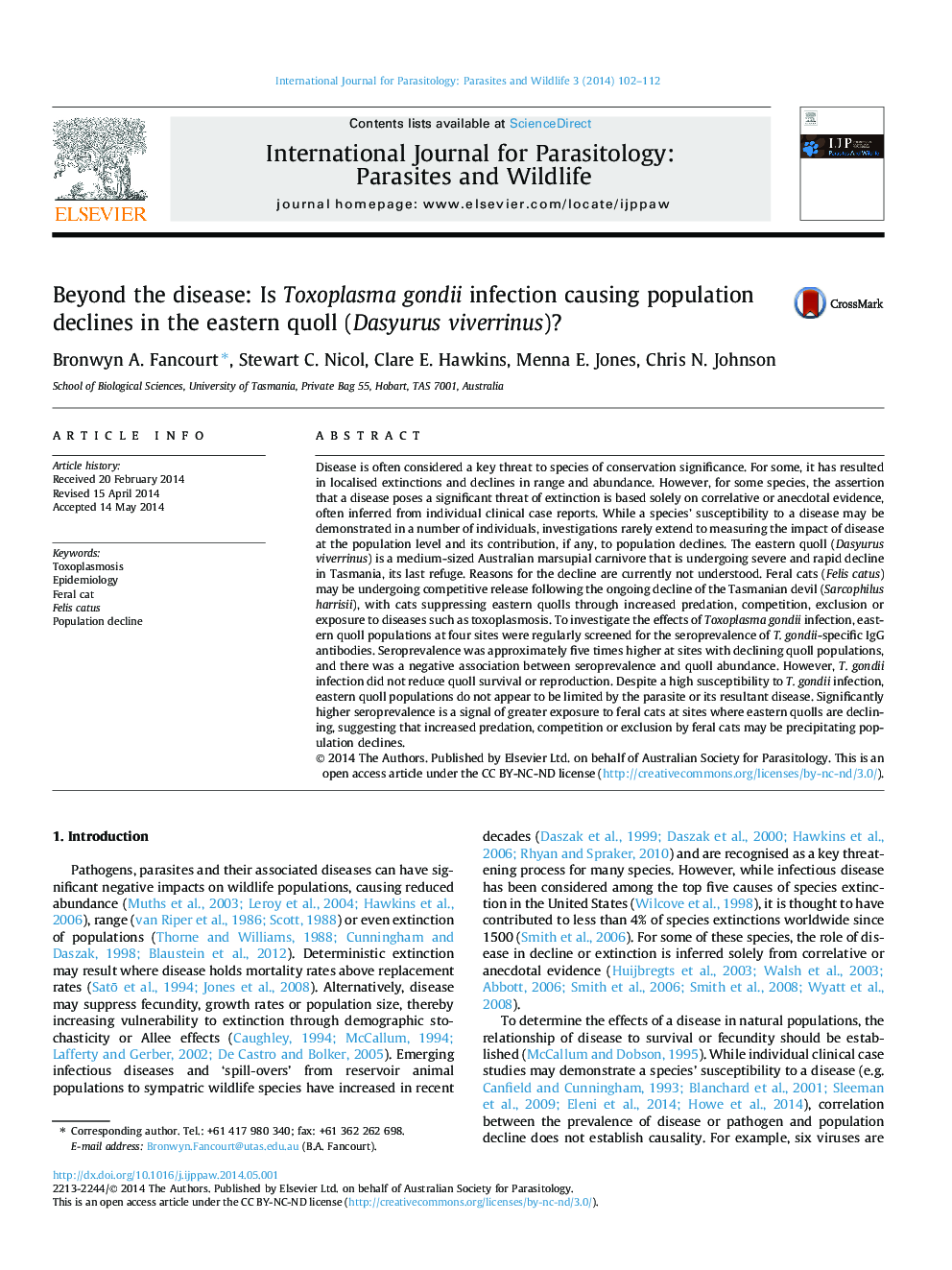| کد مقاله | کد نشریه | سال انتشار | مقاله انگلیسی | نسخه تمام متن |
|---|---|---|---|---|
| 2055318 | 1075739 | 2014 | 11 صفحه PDF | دانلود رایگان |

• Seroprevalence of Toxoplasma gondii was investigated in eastern quolls.
• Seroprevalence of IgG antibodies was higher at sites where quolls were declining.
• T. gondii infection did not reduce quoll survival or reproduction.
• Higher seroprevalence signals higher exposure to feral cats at declining sites.
Disease is often considered a key threat to species of conservation significance. For some, it has resulted in localised extinctions and declines in range and abundance. However, for some species, the assertion that a disease poses a significant threat of extinction is based solely on correlative or anecdotal evidence, often inferred from individual clinical case reports. While a species’ susceptibility to a disease may be demonstrated in a number of individuals, investigations rarely extend to measuring the impact of disease at the population level and its contribution, if any, to population declines. The eastern quoll (Dasyurus viverrinus) is a medium-sized Australian marsupial carnivore that is undergoing severe and rapid decline in Tasmania, its last refuge. Reasons for the decline are currently not understood. Feral cats (Felis catus) may be undergoing competitive release following the ongoing decline of the Tasmanian devil (Sarcophilus harrisii), with cats suppressing eastern quolls through increased predation, competition, exclusion or exposure to diseases such as toxoplasmosis. To investigate the effects of Toxoplasma gondii infection, eastern quoll populations at four sites were regularly screened for the seroprevalence of T. gondii-specific IgG antibodies. Seroprevalence was approximately five times higher at sites with declining quoll populations, and there was a negative association between seroprevalence and quoll abundance. However, T. gondii infection did not reduce quoll survival or reproduction. Despite a high susceptibility to T. gondii infection, eastern quoll populations do not appear to be limited by the parasite or its resultant disease. Significantly higher seroprevalence is a signal of greater exposure to feral cats at sites where eastern quolls are declining, suggesting that increased predation, competition or exclusion by feral cats may be precipitating population declines.
Figure optionsDownload as PowerPoint slide
Journal: International Journal for Parasitology: Parasites and Wildlife - Volume 3, Issue 2, August 2014, Pages 102–112